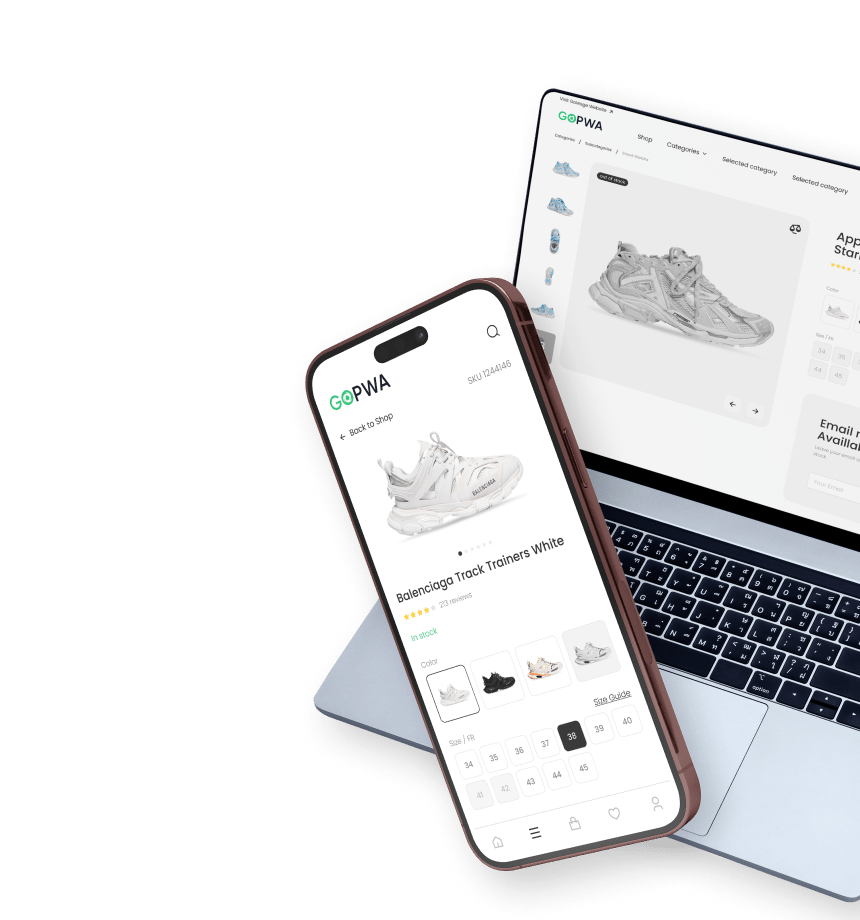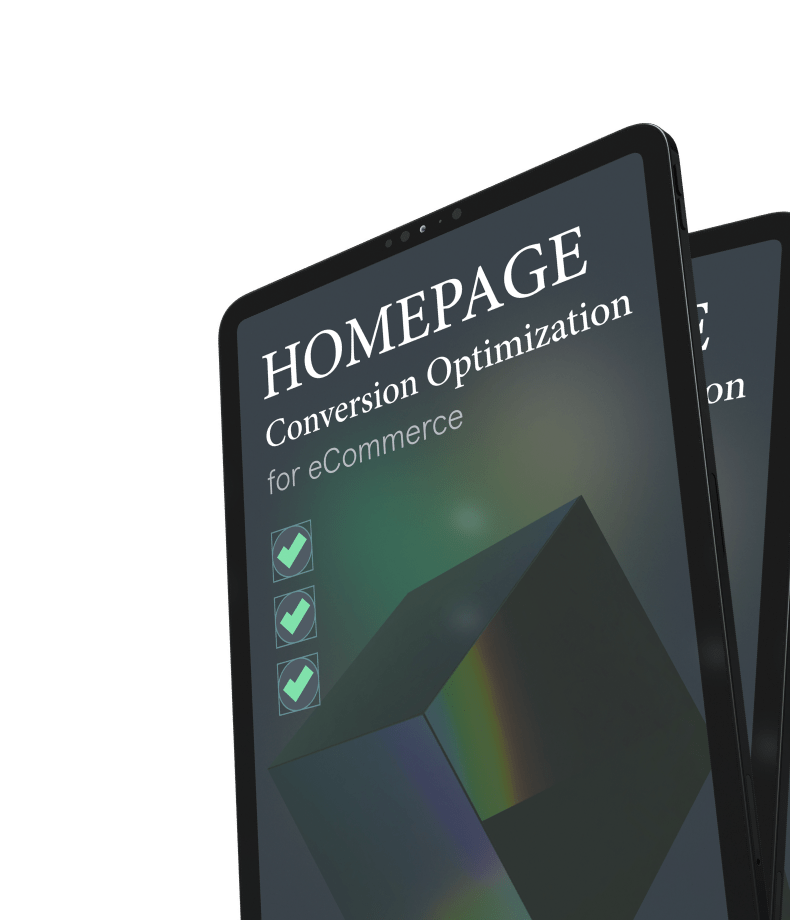Regardless of the size of your eCommerce business, implementing cross-selling and upselling techniques can significantly boost your sales and increase your bottom line.
Did you know that сross-selling and upselling contribute to a substantial 35% of Amazon’s revenue? Sounds astounding, right? This staggering figure showcases the pivotal role these strategies play in driving eCommerce success. The good news is that these powerful approaches aren’t limited to retail giants like Amazon..
In this article, we are going to cover everything you wanted to know about cross-selling and upselling:
- What are they?
- What’s the difference between them?
- Why and how to use them effectively?
Let’s start.
What is cross-selling?
Cross-selling is a sales technique in which a business or seller suggests additional products or services to a customer who is already interested in making a purchase. It involves offering complementary or related items that align with the customer’s initial purchase, aiming to enhance their overall shopping experience and increase the total value of the transaction. Essentially, cross-selling encourages customers to buy more by presenting them with relevant and enticing add-on options that complement their primary purchase.

What is upselling?
Upselling is a sales strategy employed by businesses to encourage customers to upgrade or purchase a higher-priced version of a product or service they are considering. Unlike cross-selling, which focuses on offering complementary items, upselling aims to convince customers to spend more by persuading them to opt for a premium or upgraded version of the product they originally intended to buy. The goal is to highlight the additional features, enhanced quality, or superior benefits of the higher-priced option, ultimately increasing the overall transaction value and maximizing the customer’s satisfaction and value derived from their purchase.

The differences between cross-selling and upselling
- Upselling revolves around persuading customers to opt for a superior version of the product they intend to buy, aiming to boost sales revenue. On the other hand, cross-selling involves enticing buyers to spend extra on complementary products that align with their existing purchase, thereby increasing the number of items sold and the total sales value.
- Upselling entails offering a higher-quality or higher-priced alternative to the desired product, while cross-selling involves presenting related products to encourage additional spending.
- The objective of upselling is to increase the actual value of sales, whereas cross-selling aims to enhance the overall value of sales.
- Upselling entails promoting upgraded, higher-value, or add-on items, while cross-selling focuses on selling complementary or related products.
- Upselling increases the average bill value, whereas cross-selling boosts both the average bill value and the average ticket size, with the latter representing the average sale per customer.
Benefits of leveraging cross-selling and upselling
Leveraging cross-selling and upselling techniques can offer several benefits for businesses. Here are some key advantages:
- Increased revenue
Cross-selling and upselling techniques can significantly boost sales revenue by encouraging customers to spend more. By presenting complementary products or enticing customers to upgrade to higher-priced options, businesses can increase the overall transaction value and generate additional income.
- Enhanced customer satisfaction
When done effectively, cross-selling and upselling can enhance the customer’s overall shopping experience. By suggesting relevant add-on items or superior product options, businesses can cater to the customer’s needs and preferences, increasing their satisfaction with the purchase.
- Improved customer loyalty
By providing customers with personalized recommendations and showcasing the value of additional products or upgrades, businesses can build stronger customer relationships. Satisfied customers who feel well-served are more likely to return for future purchases and become loyal advocates for the brand.
- Efficient inventory management
Cross-selling allows businesses to promote related or complementary products, which can help manage inventory more effectively. By suggesting additional items that align with a customer’s primary purchase, businesses can optimize stock levels and ensure a balanced distribution of products.
- Competitive advantage
Implementing cross-selling and upselling strategies can give businesses a competitive edge. By effectively guiding customers towards additional purchases or upgraded options, businesses can differentiate themselves from competitors and provide a superior shopping experience.
- Higher Customer Lifetime Value
By increasing the average transaction value through cross-selling and upselling, businesses can ultimately boost the customer lifetime value. Customers who are enticed to spend more and derive greater value from their purchases are more likely to continue their relationship with the brand over an extended period, leading to long-term profitability.
Web Design Create a visually captivating and highly functional online store that drives conversions and sets you apart from the competition.

It’s important to note that while the benefits of cross-selling and upselling are significant, businesses should implement these techniques thoughtfully and ethically, ensuring that the additional offerings genuinely enhance the customer experience and provide value.
Pre-purchase vs post-purchase cross-selling & upselling
Pre-purchase upselling and cross-selling involve presenting offers to customers before they complete their purchase, either on the product page or cart page. These offers, displayed as banners, popups, or on-page divs, should be relevant and inexpensive to avoid overwhelming customers. The goal is to increase the average order value without deterring customers from completing their transactions. This technique, also known as order bumps, requires finding the right balance to ensure a positive impact on conversion rates.
On the other hand, post-purchase upselling and cross-selling offers are presented on the thank you or order confirmation page, providing customers with additional one-click purchase opportunities. These offers can also be delivered through emails. Although they lack pre-filled customer information, post-purchase offers offer convenience and the potential to generate more sales even after the initial transaction is complete.
10 Tips for effective cross-selling & upselling
To effectively implement cross-selling and upselling strategies and maximize their impact, consider the following tips:
- Gain a deep understanding of your customers’ preferences, buying behaviors, and pain points. This knowledge will help you identify relevant cross-selling and upselling opportunities that resonate with their needs and desires.
- Ensure that your cross-selling and upselling suggestions align well with the customer’s primary purchase. Offer complementary products or upgraded versions that enhance their experience or provide additional value.
- Leverage customer data and segmentation to personalize your cross-selling and upselling offers. Tailor your suggestions based on past purchase history, browsing behavior, or demographic information to make them more relevant and appealing to individual customers.
- Present your cross-selling and upselling offers at the right moment during the customer’s buying journey. Timing is key to capturing their interest and increasing the chances of a successful additional sale.
- Clearly communicate the benefits, features, and value of the cross-sold or upsold items. Use persuasive language, compelling visuals, and engaging product descriptions to captivate the customer’s attention and showcase how the suggested items enhance their overall experience.
- Offer bundled packages or discounts that combine the primary purchase with the cross-sold or upsold items. Highlight the cost-effectiveness and value proposition of purchasing the items together, encouraging customers to take advantage of the bundled deal.
- Provide training to your sales team on effective cross-selling and upselling techniques. Equip them with the knowledge and skills to identify opportunities, communicate value propositions, and address customer questions or objections.
- Continuously track and analyze the performance of your cross-selling and upselling efforts. Measure conversion rates, average order value, customer feedback, and other relevant metrics to identify areas for improvement and optimize your strategies accordingly.
- Experiment with different cross-selling and upselling approaches, product combinations, and presentation methods. Conduct A/B testing to determine the most effective strategies and refine your techniques based on real customer data and feedback.
- Always prioritize the customer’s experience and satisfaction. Ensure that your cross-selling and upselling efforts add genuine value and enhance the overall customer journey, rather than being seen as pushy or intrusive sales tactics.

Final thoughts
While upselling and cross-selling share the common goal of boosting average order value and driving profits, they operate in slightly different ways. However, what truly matters is ensuring that your offers are relevant and non-aggressive. Instead of getting caught up in the technicalities of upselling and cross-selling, focus on understanding your customers’ needs and preferences. By providing offers that are genuinely valuable and avoiding any sense of pressure or intrusion, you can effectively increase sales and foster positive customer relationships.










